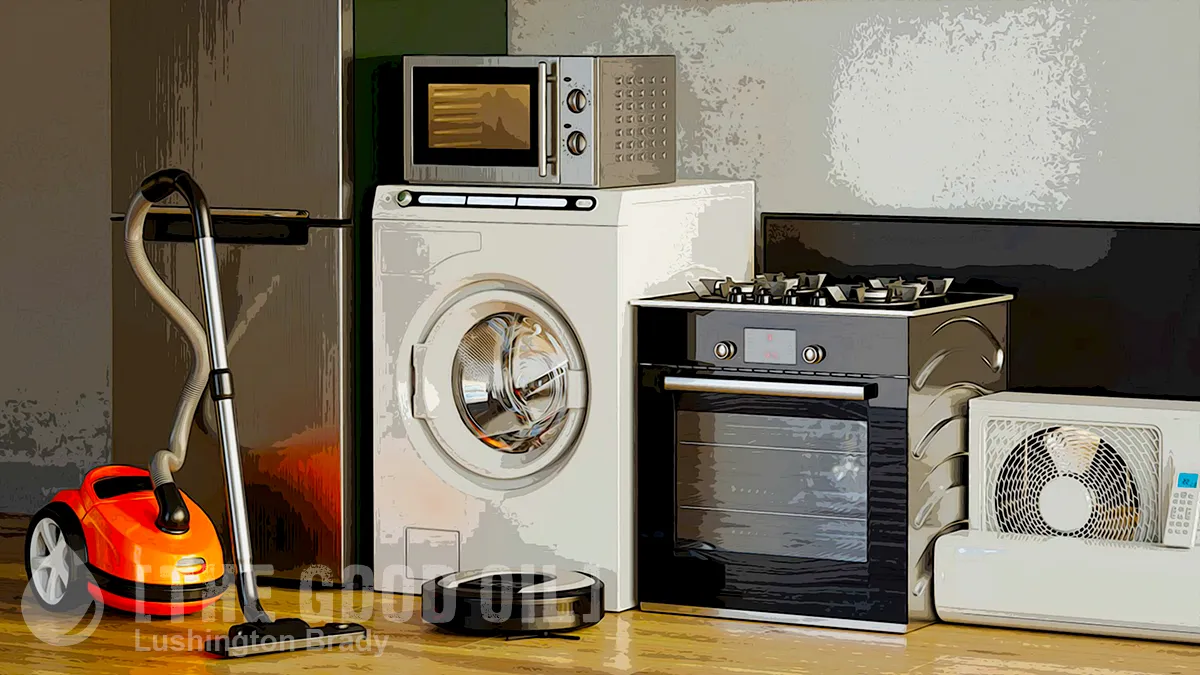Table of Contents
What is it that the green-left have against human progress?
Humans spend 10,000 years learning how to manipulate the genome of wild animals and plants in order to provide abundant, healthy, cheap food – and the green-left complain about it. Humans develop an industrialised, liberal-democratic-capitalist society that lifts more humans out of poverty faster than any time in human history – and the green-left want to tear it down. Humans develop industrialised agriculture that means less land produces more food than ever, allowing the re-wilding of large tracts of land for the first time in human history – and the green-left want to destroy it.
Then there are the home appliances developed by the capitalist economy. When Soviet citizens toured the American National Exhibition in Moscow in 1959, they couldn’t help but be overawed by the amazing range of appliances available to the average American in the supposedly evil and exploitative capitalist West. Pointedly, then US vice-president Nixon emphasised that capitalist America was especially making life easier for women.
Few things have done more to liberate women worldwide than the advent of labour-saving devices like washing machines. Unless you’ve heated up water with a copper over an open fire and used it to wash every single garment by hand then bent over a washboard, you have no idea of the sheer drudgery a simple washing machine liberates women from.
Some years back, a television programme set out to faithfully recreate life on a 19th century farm. Pity the poor woman lumbered with the job of cook and housekeeper: her life was non-stop labour, from before sunrise to after sunset. The sole thing she had to look forward to was a single afternoon off in a month, where for just a few hours, she got to do nothing but lie back and relax. One afternoon in a month.
Human Progress has devoted a considerable amount of attention to home appliances – and for good reason, given the tremendous difference they have made in our lives. Whether it is the heat-related deaths averted by air conditioning, the foodborne illness prevented by refrigeration, the improvements in indoor air quality enabled by gas or electric stoves, or the liberation of women worldwide facilitated by washing machines and other labor-saving devices, these appliances have improved the human condition considerably over the past century or so.
Back in ’59, Kruschev found it hard to believe that these magical devices could be afforded by average workers. They not only could, but they’ve got even cheaper over time. I recently saw a photo of the first sale of colour TVs in Australia. The adjusted price in today’s dollars was in the tens of thousands.
Although many appliances started as luxury items within reach of no more than a wealthy few, they didn’t stay that way for long. For example, the first practical refrigerator was introduced in 1927 at a price that was prohibitive for most Americans, but by 1933, the price was already cut in half, and by 1944, market penetration had reached 85 percent of American households.
Other appliances have similarly spread to the majority of households, first in developed nations over the course of the 20th century and now in many developing ones. And the process continues with more recently introduced devices, such as personal computers and cellphones. Cato Institute adjunct scholar Gale Pooley has extensively documented the dramatic cost reductions for appliances over the past several decades. The reductions are especially striking when measured by the declining number of working hours at average wages needed to earn their purchase price. For example, the “time price” of a refrigerator dropped from 217.57 hours in 1956 to 16.44 hours in 2022, a 92.44 percent decline.
Home appliances are a free-market success story. Virtually every one of them was developed and introduced by the private sector. These same manufacturers also succeeded in bringing prices down over time, all while maintaining and often improving on quality.
And the green-left hate it.
Hence, in most Western countries a growing regulatory burden is reversing affordability and quality and most often in the name of ‘climate change’. Consider air-conditioning: if, as the Climate Cult keep shrieking at us, the world is getting hotter, then surely air-conditioning is a literal life-saver?
Yet air conditioning is often denigrated as an unnecessary extravagance that harms the planet through energy use and greenhouse gas emissions. As a result, air conditioning faces a growing list of regulations, the cumulative effect of which threatens to reverse its declining time price.
Refrigerators, which work on much the same technology, are another life-saver, especially in developing countries where they aren’t already ubiquitous. Governments, egged on by climate alarmists, are imposing similarly costly regulations.
Several appliances can be powered by natural gas or electricity, particularly heating systems, water heaters, and stoves. The gas versions of these appliances are frequently the most economical to purchase, and they are nearly always less expensive to operate given that natural gas is several times cheaper than electricity on a per unit energy basis. However, natural gas is a so-called fossil fuel and thus a target of climate policymakers who are using regulations to tilt the balance away from gas appliances and toward electric versions. A complete shift to electrification has been estimated to cost a typical American home over $15,000 up-front while raising utility bills by more than $1,000 per year.
The odd thing is, you never see a climate change protester who’s willing to give up their fridge, car, air-conditioning, overseas holidays…
It’s always someone else who has to ‘save the planet’.









